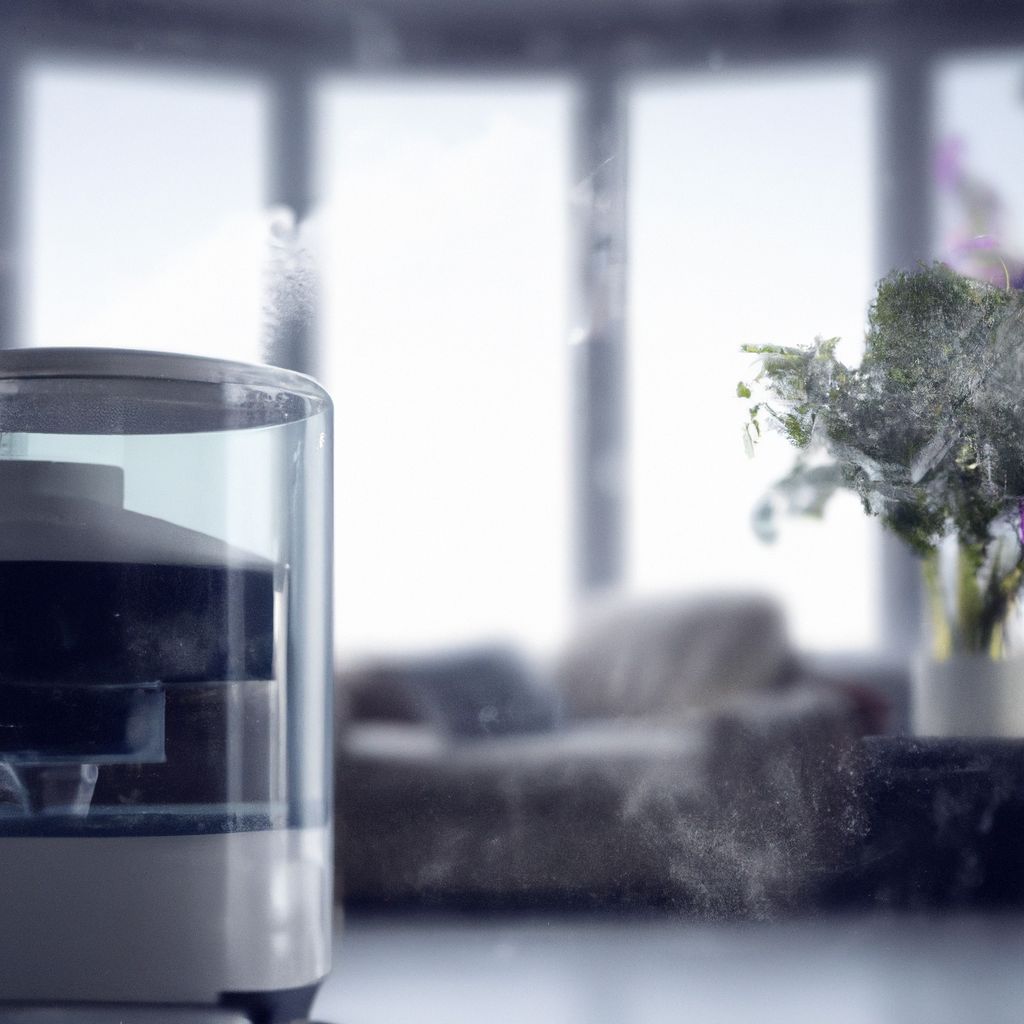Whether you live in a humid climate or you’re simply looking to create a more comfortable environment, dehumidifiers can be valuable additions to your home. In this guide, we’ll explore the importance of having a dehumidifier and the various types available. From preserving your furniture to improving air quality, we’ll uncover the benefits that come with investing in a dehumidifier. So, let’s dive in and discover how these innovative appliances can create a healthier and more enjoyable living space.
Importance of a dehumidifier
Dehumidifiers are essential for creating a healthy living space. Too much moisture in the air can lead to mold, bad smells, and even breathing problems. Dehumidifiers are designed to get rid of the extra moisture, lower the humidity, and improve indoor air quality.
Different types of dehumidifiers exist. Refrigerant dehumidifiers cool the air to condense the moisture. Desiccant dehumidifiers use a drying agent to absorb the moisture. And whole-house dehumidifiers are made to fit into HVAC systems and regulate humidity in the whole home.
Using a dehumidifier helps with mold, odors, and more. It preserves furniture, electronics, and other possessions from damage caused by moisture. It also makes air conditioning more effective and lowers cooling costs.
When choosing a dehumidifier, consider the size of the room, the desired humidity level, drainage options, noise level, and energy efficiency. Do research to pick the right one for your needs.
While a dehumidifier is great, take other steps to reduce humidity too. Ventilate for fresh air circulation. Use exhaust fans in bathrooms and kitchens. Fix any leaks or water seepage. And avoid activities that release moisture. Research and shop for the top 10 dehumidifiers in the UK to beat the humidity!
In conclusion, dehumidifiers are essential for a comfortable and healthy living environment. They remove extra moisture, prevent mold and bad smells, and even save energy. Research different models and choose the best one for you. Be sure to go with a reliable UK Aircon for the highest quality and peace of mind.
Types of dehumidifiers
Dehumidifiers are must-have appliances to keep a healthy home. They can help reduce too much moisture in the air. It can stop mold, bad smells, and damage to furniture and electronics. Knowing the different kinds of dehumidifiers can help you select the best one for you.
- Desiccant Dehumidifier: These use a desiccant, like silica gel, to take moisture from the air. They work well in cold areas and where humidity is high.
- Refrigerative Dehumidifier: This type uses cooling to make moisture condense and collect in a reservoir. Suitable for most homes. Works well in moderate humidity.
- Whole-House Dehumidifier: These are bigger and more powerful than portable ones. They integrate into your HVAC system to control humidity throughout your home.
When choosing a dehumidifier, consider size, humidity levels, and energy efficiency. Some models have adjustable humidity settings, auto shut-off when full, and air filters for better air quality.
To reduce humidity at home, follow these tips:
- Ventilate by opening windows or using exhaust fans in high-humidity areas like bathrooms and kitchens.
- Take care of any leaks or water issues quickly to avoid excess moisture.
- Use a hygrometer to monitor humidity levels and adjust dehumidifier settings.
By knowing the different kinds of dehumidifiers and taking into account your home’s needs, you can control humidity and create a comfortable living environment. Plus, remember to maintain your dehumidifier for optimal performance and longevity.Whether you choose to install or hire air conditioning, the best way to take care of your dehumidifier and your home is to stay informed.
Signs of high humidity in your home
High humidity in your home can cause many issues. From discomfort to potential health hazards, it’s important to be aware of the signs.
- 1. Sticky and clammy air: One of the first signs is an uncomfortable feeling in the air.
- 2. Condensation on windows and mirrors: If the warm, moist air touches cooler surfaces, condensation will form.
- 3. Musty and stale odor: High humidity can cause mold and mildew, which have a distinct smell.
- 4. Mold spots or water damage: Excess moisture can lead to mold growth and water damage.
- 5. Allergies and respiratory issues: High humidity can lead to dust mite growth, resulting in allergies and respiratory issues.
- 6. Difficulty in cooling: The excess moisture can make it harder to cool the space.
Also, high humidity can damage furniture, wallpaper, and electronics. Controlling humidity with dehumidifiers and proper ventilation can create a healthier environment.
Understanding the different types of dehumidifiers
Dehumidifiers are great for reducing humidity levels. There are two main types; refrigerant and desiccant. Refrigerant dehumidifiers work by cooling moist air, condensing it, storing it in a water tank, then reheating it and releasing it. Suitable for moderate to high humidity levels, they are often used in homes, offices and basements. Desiccant dehumidifiers use a desiccant material to absorb moisture. These are lightweight and compact, good for smaller spaces or low temperatures, such as cold rooms, garages and caravans.
When buying a dehumidifier, consider the size of the area, humidity levels, moisture removal capacity, energy efficiency and noise levels. A refrigerant dehumidifier is better for large areas or high humidity. Desiccant dehumidifiers are more suitable for low temperatures and small spaces. Choose one with a high moisture removal capacity for excessive humidity. Opt for an energy-efficient model to save on energy bills. Don’t forget to consider the noise levels, especially if you plan to use the dehumidifier in a bedroom.
By understanding the different types of dehumidifiers and considering your specific requirements, you can make the best choice when purchasing. The right dehumidifier will help create a comfortable and healthy environment by efficiently reducing excess moisture.
Factors to consider when choosing a dehumidifier
Dehumidifiers are a must for keeping your living space comfortable and healthy. To pick the right one, look at several factors. Firstly, size matters. If it’s a large area, you need one with high capacity. For smaller areas, go for a compact, portable model. Secondly, consider the humidity level where you live. There are dehumidifiers designed for high, moderate and low humidity regions. Plus, check the humidity control options. Some have built-in humidistats or manual controls. Noise level is important too, especially if you plan to use it in a bedroom or living area. Get a quiet one!
Energy efficiency is crucial, so stick to Energy Star certified models. Lastly, think about maintenance. Some need cleaning and filter replacement, while others have self-cleaning or washable filters. Choose wisely to create a comfortable and healthy atmosphere!
Benefits of using a dehumidifier
Using a dehumidifier offers many advantages. Firstly, it helps regulate the moisture in a room, stopping mold and mildew from growing. This can be great for those with allergies or respiratory conditions, as it improves air quality and reduces symptoms. Secondly, a dehumidifier prevents damage to furniture, clothing and other items from excess moisture. It lessens the chance of mold growth and preserves materials.
Moreover, using a dehumidifier makes living more comfortable. It reduces musty odors, stops condensation on windows, and eliminates dampness. Plus, it enhances energy efficiency, since air conditioners don’t need to work as hard to dehumidify. Lastly, it’s portable and easy to use, making it convenient to move to different places.
Dehumidifiers have been around for a long time. They were first used to tackle moisture issues in industries and then became popular for residential use. As technology advances, they become more effective and efficient.
In summary, a dehumidifier improves air quality, protects belongings, increases comfort, boosts energy efficiency, and is very convenient. By managing moisture levels, it creates a healthier environment in homes and offices. Its long history and constant technological improvements show how important it is to regulating humidity and promoting well-being.
Tips for reducing humidity in your home
Excessive humidity in the home can cause many issues. From musty odors to mold growth, it’s important to take action to reduce humidity levels. Here are some tips:
| – Ventilate your home by opening windows and using exhaust fans in areas with moisture, like the kitchen and bathroom. This allows fresh air to circulate and remove excess moisture. |
| – Buy a dehumidifier that fits your home size, as suggested in the Dehumidifiers Buying Guide. |
| – Fix any leaks or water damage quickly to stop moisture buildup. Repairing plumbing and insulation issues can help reduce moisture. |
| – Don’t overwater indoor plants. These small steps can make a big difference. |
| – Air conditioning can also help. It cools and removes excess moisture. |
Pro Tip: Measure indoor humidity levels with a hygrometer. Keeping track helps you make adjustments and reduce moisture effectively.
Conclusion
To sum up, investing in a dehumidifier can make a home’s air quality and atmosphere much better. It can help reduce moisture, stop mold and mildew from forming, and produce a healthier living space.
When selecting a dehumidifier, take into account things like size, capacity, energy efficiency, noise level, and personal needs. By picking the right dehumidifier, homeowners can get the best results and reap the rewards of improved air quality.

